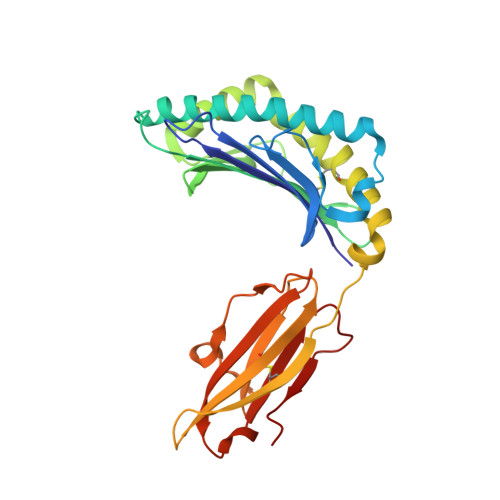Natural HLA class I polymorphism controls the pathway of antigen presentation and susceptibility to viral evasion
Zernich, D., Purcell, A.W., Macdonald, W.A., Kjer-Nielsen, L., Ely, L.K., Laham, N., Crockford, T., Mifsud, N.A., Bharadwaj, M., Chang, L., Tait, B.D., Holdsworth, R., Brooks, A.G., Bottomley, S.P., Beddoe, T., Peh, C.A., Rossjohn, J., McCluskey, J.(2004) J Exp Medicine 200: 13-24
- PubMed: 15226359
- DOI: https://doi.org/10.1084/jem.20031680
- Primary Citation of Related Structures:
1SYS, 1SYV - PubMed Abstract:
HLA class I polymorphism creates diversity in epitope specificity and T cell repertoire. We show that HLA polymorphism also controls the choice of Ag presentation pathway. A single amino acid polymorphism that distinguishes HLA-B*4402 (Asp116) from B*4405 (Tyr116) permits B*4405 to constitutively acquire peptides without any detectable incorporation into the transporter associated with Ag presentation (TAP)-associated peptide loading complex even under conditions of extreme peptide starvation. This mode of peptide capture is less susceptible to viral interference than the conventional loading pathway used by HLA-B*4402 that involves assembly of class I molecules within the peptide loading complex. Thus, B*4402 and B*4405 are at opposite extremes of a natural spectrum in HLA class I dependence on the PLC for Ag presentation. These findings unveil a new layer of MHC polymorphism that affects the generic pathway of Ag loading, revealing an unsuspected evolutionary trade-off in selection for optimal HLA class I loading versus effective pathogen evasion.
- Department of Microbiology and Immunology, The University of Melbourne, Parkville, Victoria 3010, Australia.
Organizational Affiliation:


















